
Filter News
Area of Research
- (-) Energy Science (210)
- (-) Energy Sciences (1)
- (-) Functional Materials for Energy (2)
- (-) Nuclear Science and Technology (38)
- Advanced Manufacturing (22)
- Biological Systems (1)
- Biology and Environment (33)
- Building Technologies (1)
- Computational Biology (2)
- Computational Engineering (1)
- Computer Science (4)
- Electricity and Smart Grid (3)
- Fuel Cycle Science and Technology (1)
- Fusion and Fission (32)
- Fusion Energy (10)
- Isotope Development and Production (1)
- Isotopes (29)
- Materials (88)
- Materials for Computing (11)
- National Security (37)
- Neutron Science (37)
- Nuclear Systems Modeling, Simulation and Validation (1)
- Quantum information Science (2)
- Sensors and Controls (2)
- Supercomputing (49)
- Transportation Systems (2)
News Topics
- (-) 3-D Printing/Advanced Manufacturing (82)
- (-) Biomedical (8)
- (-) Cybersecurity (9)
- (-) Energy Storage (73)
- (-) Grid (39)
- (-) Isotopes (6)
- (-) Nuclear Energy (41)
- (-) Security (6)
- (-) Space Exploration (7)
- (-) Transportation (66)
- Advanced Reactors (15)
- Artificial Intelligence (8)
- Big Data (5)
- Bioenergy (26)
- Biology (11)
- Biotechnology (4)
- Buildings (38)
- Chemical Sciences (14)
- Clean Water (8)
- Composites (17)
- Computer Science (27)
- Coronavirus (13)
- Critical Materials (9)
- Environment (54)
- Exascale Computing (2)
- Fossil Energy (2)
- Frontier (2)
- Fusion (9)
- High-Performance Computing (6)
- Hydropower (3)
- Machine Learning (7)
- Materials (36)
- Materials Science (29)
- Mathematics (2)
- Mercury (3)
- Microelectronics (1)
- Microscopy (8)
- Molten Salt (5)
- Nanotechnology (8)
- National Security (5)
- Neutron Science (15)
- Partnerships (12)
- Physics (3)
- Polymers (11)
- Quantum Science (2)
- Simulation (4)
- Statistics (1)
- Summit (4)
Media Contacts
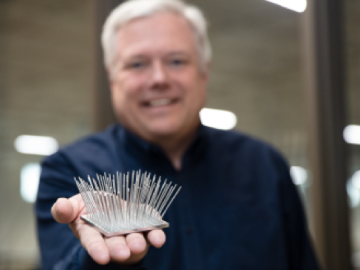
When Scott Smith looks at a machine tool, he thinks not about what the powerful equipment used to shape metal can do – he’s imagining what it could do with the right added parts and strategies. As ORNL’s leader for a newly formed group, Machining and Machine Tool Research, Smith will have the opportunity to do just that.

Ionic conduction involves the movement of ions from one location to another inside a material. The ions travel through point defects, which are irregularities in the otherwise consistent arrangement of atoms known as the crystal lattice. This sometimes sluggish process can limit the performance and efficiency of fuel cells, batteries, and other energy storage technologies.

Scientists at Oak Ridge National Laboratory have developed a low-cost, printed, flexible sensor that can wrap around power cables to precisely monitor electrical loads from household appliances to support grid operations.
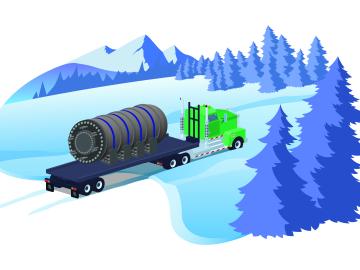
Oak Ridge National Laboratory scientists are evaluating paths for licensing remotely operated microreactors, which could provide clean energy sources to hard-to-reach communities, such as isolated areas in Alaska.
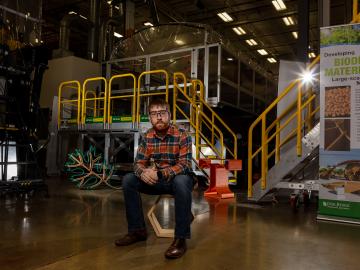
Alex Roschli is no stranger to finding himself in unique situations. After all, the early career researcher in ORNL’s Manufacturing Systems Research group bears a last name that only 29 other people share in the United States, and he’s certain he’s the only Roschli (a moniker that hails from Switzerland) with the first name Alex.

A residential and commercial tower under development in Brooklyn that is changing the New York City skyline has its roots in research at the Department of Energy’s Oak Ridge National Laboratory.
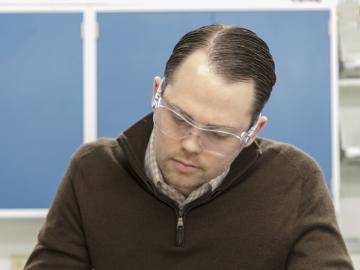
Oak Ridge National Laboratory is using ultrasonic additive manufacturing to embed highly accurate fiber optic sensors in heat- and radiation-resistant materials, allowing for real-time monitoring that could lead to greater insights and safer reactors.

Oak Ridge National Laboratory’s latest Transportation Energy Data Book: Edition 37 reports that the number of vehicles nationwide is growing faster than the population, with sales more than 17 million since 2015, and the average household vehicle travels more than 11,000 miles per year.
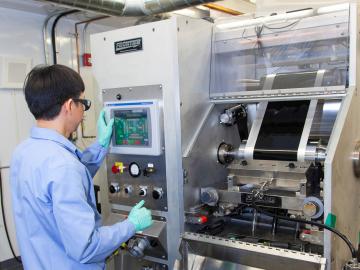
The use of lithium-ion batteries has surged in recent years, starting with electronics and expanding into many applications, including the growing electric and hybrid vehicle industry. But the technologies to optimize recycling of these batteries have not kept pace.



